Return to China
By Nicole Williams
When I was given the opportunity to travel with Imperial Tours to China, I just couldn’t pass it up. China, despite the geopolitical tensions surrounding their government and the fallout from being the epicenter of (yes, I know we’re sick of mentioning it)… Covid-19, was a country I was hoping to revisit. My mother was also ecstatic about joining me on this journey.
Traveling with Imperial Tours, a Tour Operator founded in 1999 by husband-and-wife team Guy Rubin and Nancy Kim, is the only way to go through the country. Imperial Tours was founded at a time when nearly all ground operators in China were state-owned and didn’t understand Westerners’ needs while traveling. Together, they created a company that caters to the luxury market and ensures travelers a culinary tour, should they wish. We were lucky enough to be accompanied by Nancy for the entirety of the trip. Always poised and extremely knowledgeable about China, it was a fantastic opportunity to get to know our partner and meet face to face.
Back in 2020, both China and the U.S. restricted flights between the two countries due to the pandemic. In early 2023, China began easing border restrictions and reopening to foreigners and more non-stop flights were scheduled. However, these flights represent just a small percentage of what was offered pre-pandemic. But we’re seeing more flights added to the schedule. On March 31st, the U.S. agreed to allow even more flights to and from China.
With direct flights from Chicago to Beijing and Shanghai having not been reinstated yet, we had to connect through San Francisco both ways. That, combined with US Airlines not being allowed to fly in Russian airspace, made for a lengthy travel experience. Our flight from San Francisco to Beijing was about 50% full, which was great news as I had a full Economy row to myself to stretch out.
The trip took us to four different cities and areas in China: Beijing, Xi’an, Hangzhou, and ended in Shanghai.
Beijing: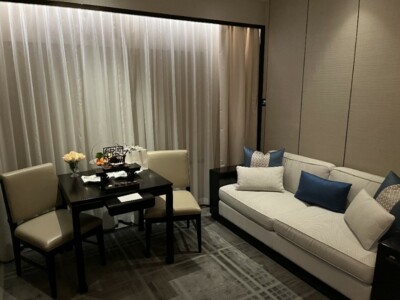
Once we arrived in Beijing we were greeted outside the jetway by a VIP Meet & Greet service that Imperial Tours arranged. A 45 minute – hour drive brought us to our first stop – The Peninsula Beijing, which is celebrating its 35th anniversary this year. Now an all-suite product, the property has recently completed a full renovation. The suites are spacious with entry-level beginning at 645 sq ft. There’s a separate living room from the bedroom, a large walk-in wardrobe, and a bathroom with a double vanity.
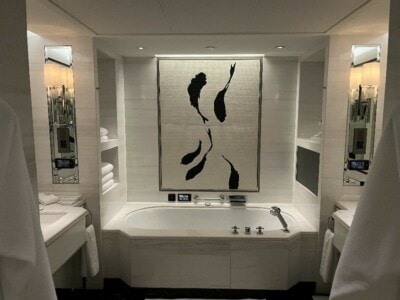
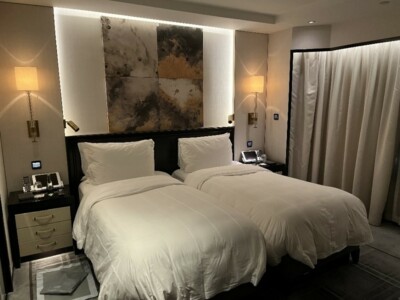
The property is located near the main attractions of Beijing, with the Forbidden City and Tiananmen Square located about 1 – 1.5 miles down the road. Our first day brought us to those exact must-see sites and The Temple of Heaven, the place where the emperor would come to pray twice a year for a good harvest. The annual People’s National Congress was occurring while we were in Beijing where government officials from all around China come together in the Great Hall just west of Tiananmen Square. With this conference came extra security in both Tiananmen Square and the Forbidden City, which was a bit of a nuisance. Another result, however, was better air quality and cleanliness during the political event, as Chinese officials shut down factories that surround the city right before and during the event and ensured that streets were cleaner.
Photographers be warned: I brought my film camera along on this trip and it proved to be quite an ordeal to communicate with security officers that my camera was not supposed to go through an x-ray. My film made it through the trip unscathed, but it was always a lingering worrying about the next security check point and how I could get it through. A note to camera film buffs, ask the concierge at your hotel to write a note on the back of the hotels business card to present to the security teams. This helps in the translation process and can protect your film.
We were able to visit both the Four Seasons Beijing and the Bulgari Hotel Beijing. Located down the street from each other, they are set in a more residential area of the city that finds you along the Liangma River, with fewer tourists and in a more walkable area. The Four Seasons has a club level which is a great amenity, but the property could use a slight refresh as it’s a bit dated with darker woods throughout. The Bulgari is exactly what you would expect from the brand – a modern Italian design with dark lighting creating a sexy atmosphere. Entry-level rooms at the Four Seasons start at about 500 sq ft. while the Bulgari is 600+ sq ft. For the Bulgari brand, the Beijing location is a steal, with rates averaging about 50% less than other locations.
One can’t go to Beijing without seeing the Great Wall of China. There are three sections that tourists find themselves visiting, with the section closest to the city being the most popular, and therefore the most crowded. Imperial Tours recommends venturing to the Jinshanling section which is the furthest one and is generally considered to be one of the most beautiful sections of the wall. After the 2.5-hour drive from Beijing, we were treated to a once-in-a-lifetime private lunch banquet on top of the wall itself. Imperial Tours has built a friendship and partnership with the local village whose residents help to carry all the tables, chairs, and food to the top. It was simply incredible…one of those pinch me, I must be dreaming moments. Though only two days into our twelve-day trip, my mother turned to me and said: “If we had to go home tomorrow, this trip would have already surpassed all of my expectations.”
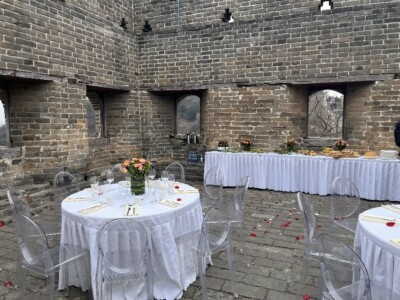
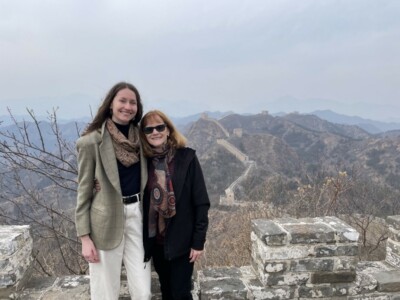
Our time in Beijing (and the surrounding area) ended with a visit to the UNESCO World Heritage Site – the Summer Palace. Built during the Qing Dynasty it is the largest imperial garden in the country. Surrounding man-made Kunming Lake, it was the place where the emperor and the royal court members would stay during the hot summers.
Xi’an:
Imperial Tours would typically direct travelers to take the bullet train from Beijing to Xi’an in order to have a chance to view the countryside. It’s about a 4-hour journey, but, due to our group size and a train schedule change, we ended up taking a 2-hour flight to Xi’an. First Class is a necessity on Air China, as Economy leaves one with little to no legroom.
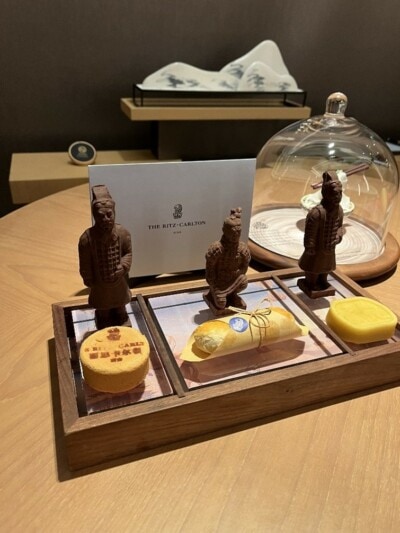
Again, a 45-minute drive took us from the airport to our hotel for our two-night stay: The Ritz-Carlton Xi’an. Located next to one of China’s luxury malls (that you can find around what seems like every corner in China), it’s set in the central business district. Even with two double beds in our room, it left us with a wonderful sitting area next to the large wall of windows. And just look at their welcome amenity – miniature terracotta warriors made out of chocolate!
The art and smaller details in the room made it feel like a residential stay. The property had a fantastic breakfast spread at their Xian Kitchen which offered both Western and Chinese options. One could have fresh fruit and pastries while having a bowl of hand-stretched wide wheat noodles (a signature dish in Xi’an) prepared by a chef right in front of you. The property also has a Club Lounge Level that spans an entire floor where guests can enjoy up to five meals a day.
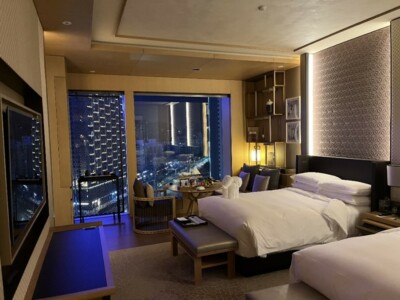
Xi’an is the original capital of China and was home to the first ten dynasties. Just like you can’t go to Beijing without seeing the Great Wall, you can’t go to Xi’an without seeing the Terracotta Warriors. Located about a one-hour drive from the Ritz-Carlton, there are three main pits to view, with Pit #1 being the largest and the one that we all recognize from pictures. Created from 221–206 BCE to guard the first emperor of China Qin Shi Huang in the afterlife, each of the estimated 8,000 life-sized warriors is unique and based on a real person. Pictures do not do the army justice and it was an extraordinary experience to see them in person. The details are so intricate that there is even tread on the sole of the warriors’ shoes.

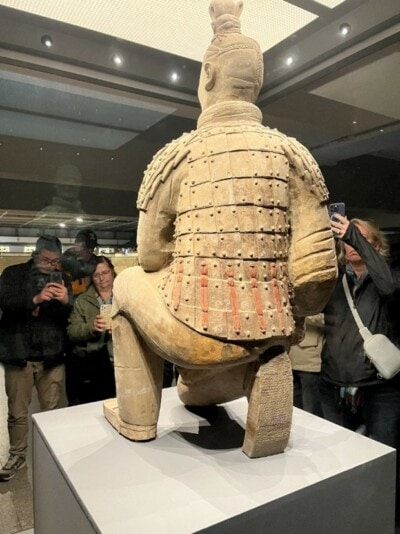
We then traveled back into the city to the Muslim Quarter where we visited the Great Mosque. This may surprise you, as much as it did me, there is such a thing as a Muslim Quarter that exists in Xi’an. However, once you learn that Xi’an is the eastern end of the Silk Road, the place where millions of travelers and traders would come through over the span of 1,500 years, it makes complete sense. The Great Mosque was beautiful – mixing Chinese and Muslim characteristics and the area is lively with many small shops and food vendors.
We visited the Sofitel Legend Peoples Grand Hotel Xi’an which is located within the old city walls of Xi’an. Originally designated as China’s official haven for dignitaries, it was the first hotel to accept foreigners in the city. Renovated 10 years ago, the rooms are light with Sofitel’s French style. The hotel is located on a large gated lot with a garden that also includes their Sofitel Xian on Renmin Square property.
Our last morning in Xi’an brought us to the Shaanxi Rare Wildlife Rescue Base and, although not well known, it is a great alternative if you don’t have time to travel to Chengdu which is known for its pandas. The rescue base holds multiple adult pandas (including a rare brown panda) and, most importantly, you can also see baby pandas and red pandas! They are as adorable and playful as you would expect. Along the way to the rescue base, we passed the hill which holds the tomb of Emperor Qin Shi Huang beneath. The tomb remains sealed while archaeologists and scientists wait for technology to be advanced enough to be able to preserve the site to the best of their ability. There are also worries there may be booby traps inside.
What used to be considered a one-night stop, Xi’an can now easily fill two nights of an itinerary.
Hangzhou:
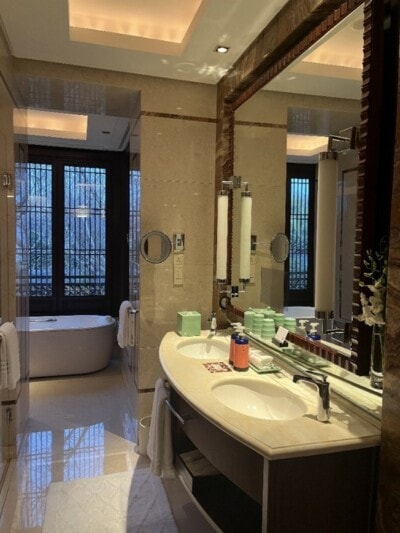 A two-hour flight brought us to Hangzhou, the place that Marco Polo once said was “by far the most glorious city in the world”. We flew Hainan Airlines which proved to be more comfortable with plenty of legroom in Economy. From the airport we drove to the property that I had been looking forward to visiting the entire trip – the Four Seasons Hotel Hangzhou at West Lake. What an oasis! Surrounded by gardens and located right on the banks of the famous West Lake, it is absolutely beautiful and tranquil. The property has classic Chinese architecture and the rooms have details that give you a true sense of place – you are in China!
A two-hour flight brought us to Hangzhou, the place that Marco Polo once said was “by far the most glorious city in the world”. We flew Hainan Airlines which proved to be more comfortable with plenty of legroom in Economy. From the airport we drove to the property that I had been looking forward to visiting the entire trip – the Four Seasons Hotel Hangzhou at West Lake. What an oasis! Surrounded by gardens and located right on the banks of the famous West Lake, it is absolutely beautiful and tranquil. The property has classic Chinese architecture and the rooms have details that give you a true sense of place – you are in China!
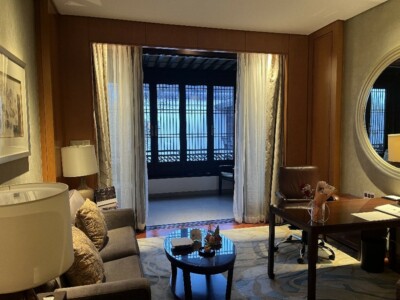
Hangzhou pleasantly surprised me from the start with its connection to nature. Treelined streets, parks found all around, lush spring flowers, hiking options nearby, and the lake is there for visitors to take a boat ride. With a population of over 10 million people, Hangzhou is in no terms a small city but it does give off a smaller city vibe.
The activities in the area reflect the calmer, nature-oriented feel of the city. My mother and I took a bike ride around a part of the lake and then our entire group took part in a Tai Chi Class. Afterward, we boarded a gondola right off the Four Seasons property and took a wonderful trip through the calm canals while being serenaded by a Guzheng and Liuqin player.
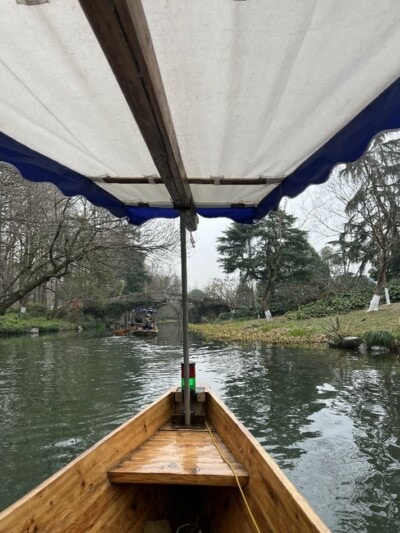

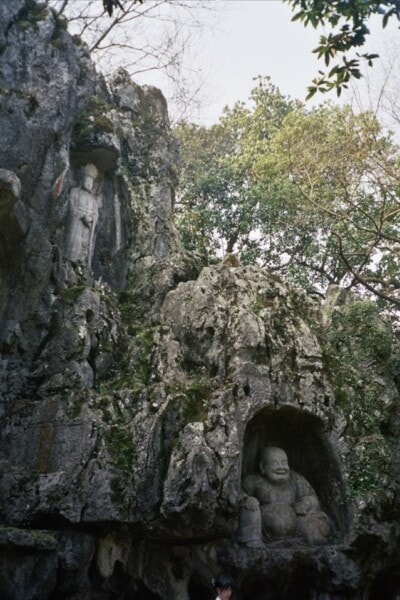 We also learned about the ancient Five Disciplines that gentleman scholars were expected to excel at to further their study of the Dao or inner truth. The five are tea, incense, flower arrangement, music, and calligraphy. A visit to Lingyin Temple educated us about Buddhism. It contains over 300 ancient statues carved into limestone between the 10 – 14th centuries.
We also learned about the ancient Five Disciplines that gentleman scholars were expected to excel at to further their study of the Dao or inner truth. The five are tea, incense, flower arrangement, music, and calligraphy. A visit to Lingyin Temple educated us about Buddhism. It contains over 300 ancient statues carved into limestone between the 10 – 14th centuries.
Located through a small gate next to Lingyin Temple is the Amanfayun. Opened in 2010, the property has converted the homes and buildings from a local village into guest rooms and, in a way, a small town. Some of the locals who used to live in the village actually work at the hotel – adding a very personal touch to the guest experience. Centered around a main cobblestone walkway, there are offshoots that wind you through the flora. At check-in, you are given a map to find your way around – and it is definitely needed! The village has a few stairs going here, and a few going there but golf carts can be called to help guests around if they have any mobility issues.
Another option to consider on your trip to Hangzhou is the Park Hyatt Hangzhou which is located in a newer area of the city. With views of the river (and some distant view of the lake), rooms are spacious and the overall design of the hotel showcases a modern design with Chinese influence.
Shanghai:
Our last stop on our fascinating journey through China was Shanghai. On the way, we stopped in Wuzhen – a historic water town that was about an hour drive from Hangzhou. The charming traditional stone buildings, bridges, and pathways are divided by a river that runs through the town. Here we took a boat ride through the town.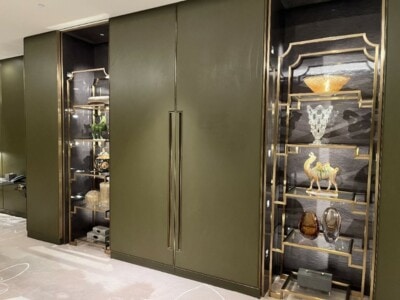
Another two hours brought us to the exceptional J Hotel in Shanghai Tower. Located in Pudong (on the east side of the Huangpu River) within the tallest skyscraper in China and the third tallest in the world, guest rooms are located from the 86 – 98th floors. This property is show-stopping with its impressive art collection that blends modern and traditional. Making your initial ascent to the lobby (located on the 101st floor), a gust of wind (from the elevator shaft) will meet you when exiting the elevator. Your head is literally in the clouds as you peer down at the unmistakable Pearl Tower and the Bund across the river. The entry-level rooms are spacious at about 660 sq ft and are elegantly appointed with pieces of their art collection displayed throughout.
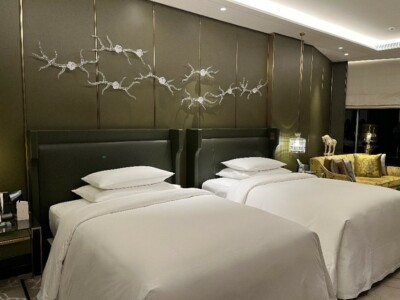


View from our room!
Our partners at J Hotel have extended a fantastic offer for 2024 and any bookings made through me for travel dates this year will be given a complimentary upgrade to the next room category at the time of booking. Don’t miss out on this!
One of our days in Shanghai took us on a walking tour of the colonial areas of the city with a member of the Shanghai Historical Society. Following the 1842 British victory in the First Opium War, several Chinese ports were opened to foreign merchants, and the British were allowed to establish territory in Shanghai. The Americans and French followed suit and established their own enclaves. Combining in 1854 to create the Shanghai Municipal Council to serve Western interests, the French dropped out of the arrangement, creating the French Concession (now more well known as the Bund). These international settlements came to an end when the Japanese invaded in 1941 but the colonial-style buildings are still standing.
We headed to the Urban Planning Museum – one of my favorite places to visit. As one can correctly assume from the name, it details Shanghai’s urban planning and development from the past, present and the plans for the future. The museum gives great insight into what Chinese and Shanghainese priorities are for the future of the area and boy, is it impressive.
For art lovers, Shanghai has just finished building its new museum that focuses on ancient Chinese art – the Shanghai Museum on People’s Square. They just recently opened to the public but were still in the process of moving artifacts over from the old Shanghai Museum and establishing the exhibits when we visited. Now named the Shanghai Museum on People’s Square, they will designate the old museum space to display international art exhibits.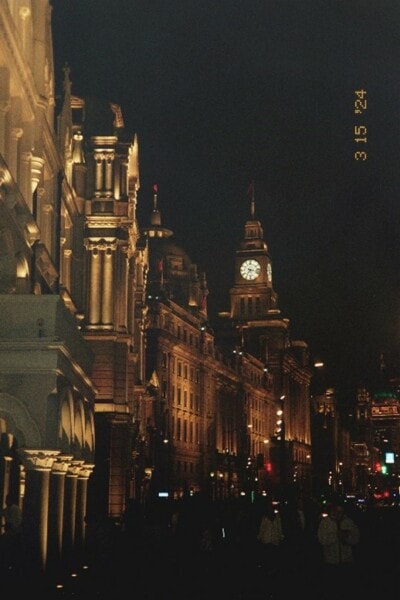
If you’re looking to stay on the Puxi (pronounced Poo-shee) side of the Huangpu River, The Peninsula Shanghai and The Middle House are great options. The Peninsula is the brands’ flagship hotel in Mainland China and the go-to property if you’re looking to stay in the Bund and have fantastic views of the famous Shanghai skyline. The style is classic European and you are right in the action. For those wanting to avoid the crowds when walking outside your hotel, the Bund may not be the place for you.
The Middle House is located 2 miles west of the riverfront Bund and is a part of The House Collection. This collection currently consists of four Chinese properties (Beijing, Chengdu, Shanghai, and Hong Kong) with its first property outside of the country opening in Tokyo in 2027. The Shanghai property consists of two low-rise buildings (for China) that connect underground, with one designated as a residence. There is a relaxed and comfortable feel to the property.
A visit to Yu Garden and the surrounding area, which touts old architecture that in actuality was built in the 90’s, and a shopping trip to artsy Tianzifang ended our trip. We were transferred to the Shanghai Airport which, you may have guessed, is about 45 minutes from Pudong.
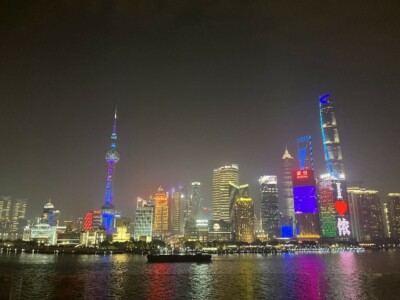
Calling all Foodies! Fantastic food was another focus of our travels through China. Michelin is new to China so we were told that they are still “learning” Chinese food. Some restaurants have been given stars or are Michelin Recommended and may not give guests a consistent experience.
– Honorable Mentions:
o Beijing: Green T Living
o Xi’an: Restaurant Le Chinois
o Hangzhou: Forty8
o Shanghai: Heavenly Jin
· Guinness World Record Holder for “Highest Restaurant in a Building”
– Michelin Recommended:
o Beijing: Mio*
o Shanghai: Mercato
– One Michelin Star:
o Beijing: Lu Style
o Beijing: Cai Yi Xuan*
o Beijing: Il Ristorante
o Hangzhou: Jin Sha
o Shanghai: Yi Long Court
*We dined at both of these restaurants at the Four Seasons Beijing in one night. I’m not sure of anyone who could say they’ve dined at two restaurants that are in the Michelin Guide in the same evening!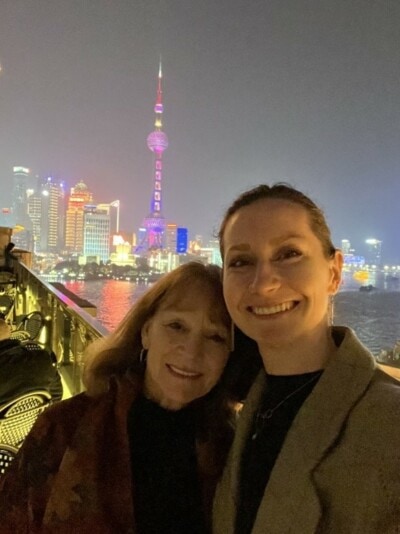
I cannot express my joy regarding the extraordinary experience of traveling in China and especially traveling in China with Imperial Tours. With Nancy and Guy at the helm, I completely trust my clients in their hands. China is ready to welcome back Americans, if Americans are willing to give the country, and its people, a chance. I hope to continue seeing an increase in direct flights from major U.S. cities to Beijing and Shanghai, making it easier for Americans to travel to this amazing country.

